Are you looking for the Best LinkedIn automation tool to grow your business? Do you want to connect with more potential customers and save time? If yes, then you are in the right place. LinkedIn is a powerful platform for professionals. It can help you find new leads and build relationships. But doing everything manually can take a lot of time. That’s where LinkedIn automation tools come in.
These tools help you automate tasks on LinkedIn. This can include sending connection requests, sending messages, and following up with prospects. You can focus on other important parts of your business by automating these tasks. You can spend more time talking to potential customers and closing deals.
One tool that you might have heard about is Close. Some people are looking for a “Closely Lifetime Deal“. A lifetime deal means you pay once and use the tool forever. While I don’t have specific details about a current “Closely Lifetime Deal” right now, it’s good to understand what Closely does and why it might be the Best LinkedIn automation tool for you.
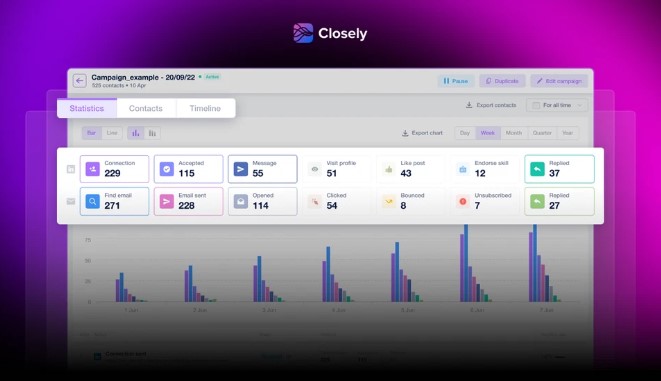
What is Close?
Closely is a tool that helps businesses find and connect with leads on LinkedIn and through email. It aims to make the process of finding new customers easier and faster. Closely can automate many of the repetitive tasks involved in LinkedIn outreach, allowing you to reach more people in less time.
Key Features of Closely as the Best LinkedIn automation tool
- LinkedIn Automation: Closely can automate sending connection requests to people who fit your ideal customer profile. It can also send automated follow-up messages to those who connect with you. This helps you nurture relationships without spending hours on manual outreach.
- Email Finder: Closely often includes a feature to find the email addresses of your LinkedIn connections. This allows you to reach out to them through another channel. Having both LinkedIn and email contact information can increase your chances of getting in touch.
- B2B Contact Database: Some versions of Closely may offer access to a database of business-to-business (B2B) contacts. You can filter these contacts by industry, job title, location, and other criteria to find the right people for your business.
- Campaign Management: Closely allows you to create and manage outreach campaigns. You can set up sequences of actions, like sending a connection request followed by a message after a few days. This helps you stay organized and consistent with your outreach.
- Smart Inbox: Closely often has a smart inbox to manage your LinkedIn conversations. This can help you keep track of your messages and respond to prospects quickly. Features like tagging can help you organize your contacts.
- Lead Management: Some features help you score and segment your leads. This allows you to focus on prospects most likely to become customers.
- Analytics and Reporting: This service provides detailed data on your campaigns’ performance. You can see who is connecting and responding to your messages and other important metrics, which helps you understand what’s working and what’s not.
Why Use a LinkedIn Automation Tool?
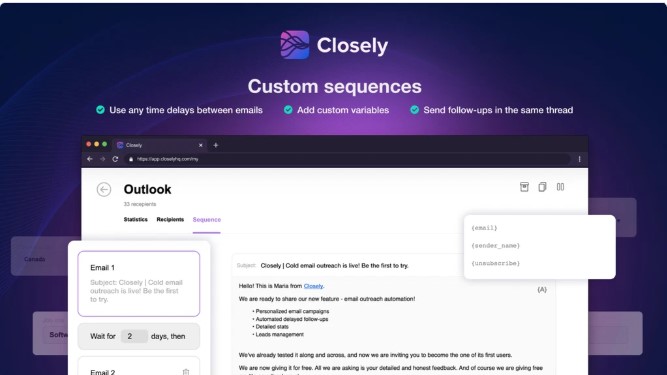
Using a tool like what some might consider the Best LinkedIn automation tool can offer several benefits:
- Save Time: Automation handles repetitive tasks, freeing your time for more strategic activities.
- Reach More People: You can send more connection requests and messages than manually.
- Improve Efficiency: Automated follow-ups ensure you don’t forget to engage with your prospects.
- Stay Organized: Campaign management and smart inboxes help you keep track of your outreach efforts.
- Generate More Leads: By reaching more of the right people, you can increase your chances of generating leads.
Finding the “Closely Lifetime Deal” as the Best LinkedIn automation tool
Lifetime deals for software like Closely are usually temporary promotions. They might be offered on the official website or through deal platforms. To find out if a “Closely Lifetime Deal” is available, you should:
- Check the Closely Website: Look for special offers or pricing plans that mention a one-time payment.
- Monitor Deal Websites: Sites specializing in software deals often list lifetime offers. Keep an eye on these platforms.
- Search Online: Use search engines to look for “Closely Lifetime Deal” to see if there are any current promotions.
Let’s break down each of these terms related to LinkedIn and sales:
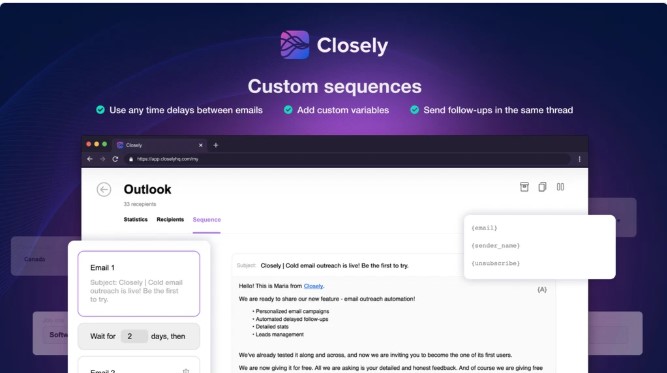
1. LinkedIn Outreach:
- What it is: LinkedIn outreach is the strategy of proactively reaching out to other LinkedIn members to build connections and relationships and potentially generate leads or opportunities. It involves sending connection requests and direct messages.
- Goal: The aim is to engage with individuals relevant to your professional goals, whether for networking, finding job opportunities, seeking advice, or promoting your business. Effective outreach focuses on personalization and providing value.
- How it’s done: This typically starts with identifying your target audience using LinkedIn’s search filters. Then, you send personalized connection requests, often including a brief note explaining why you want to connect. Once connected, you can send direct messages to initiate conversations, share relevant content, or explore potential collaborations.
2. Lead Generation Software:
- What it is: Lead generation software comprises tools and platforms designed to attract and capture potential customers (leads) who have shown interest in a company’s products or services.
- Goal: The primary goal is to identify individuals or businesses that could become future customers and gather their contact information for further nurturing and sales efforts.
- How it works: Lead generation software offers various features, such as creating landing pages and forms, managing email campaigns, tracking website visitor activity, engaging with chatbots, and integrating with CRM (Customer Relationship Management) systems to manage and follow up with leads.
3. Sales Automation:
- What it is: Sales automation involves using software and technology to streamline and automate repetitive tasks within the sales process.
- Goal: The main objectives are to increase efficiency, improve productivity, reduce manual errors, and ultimately drive more sales. By automating routine tasks, sales teams can focus on building relationships and closing deals.
- How it works: Sales automation tools can automate various activities, including lead nurturing (sending automated follow-up emails), contact management, scheduling appointments, generating quotes and proposals, and reporting on sales activities. CRM systems often have built-in sales automation features.
4. Social Selling Tools:
- What it is: Social selling tools are platforms and applications that help sales professionals leverage social media networks, like LinkedIn, to find, connect with, understand, and nurture potential customers.
- Goal: To build trust and relationships with prospects by engaging with them on social media, sharing valuable content, and positioning oneself as a knowledgeable resource. This can lead to increased sales opportunities.
- How it works: These tools offer features such as identifying prospects based on specific criteria, tracking social media activity, scheduling posts, engaging in conversations, and analyzing social selling performance. Some tools integrate with CRM systems to provide a holistic view of customer interactions.
5. Prospecting on LinkedIn:
- What it is: Prospecting on LinkedIn is the strategic process of identifying and initiating contact with potential clients or customers on the LinkedIn platform. It’s a targeted approach to finding individuals or businesses that align with your ideal customer profile.
- Goal: The goal is to find qualified leads interested in your products or services and build relationships that can eventually lead to sales. Effective prospecting involves research, personalization, and providing value.
- How it’s done: This involves using LinkedIn’s search filters (including advanced filters and Sales Navigator, if available) to find relevant profiles. It also includes reviewing profiles to understand their needs and pain points, engaging with their content, and sending personalized connection requests and initial messages.
6. Automated Messaging:
- What it is: Automated messaging refers to using software to send pre-written or dynamically generated messages to individuals or groups, often triggered by specific actions or timelines.
- Goal: To save time and effort, we aim to automate communication, ensure consistent follow-up, and scale outreach efforts.
- How it works: In the context of LinkedIn, this can involve automatically sending follow-up messages after a connection request is accepted, sending a sequence of messages as part of a lead nurturing campaign, or using chatbots to engage with profile visitors. It’s crucial to use automation thoughtfully and personalize messages where possible to avoid appearing spammy.
7. Connection Requests:
- What it is: A connection request on LinkedIn is the initial step to formally connect with another user on the platform and add them to your professional network.
- Goal: The primary goal is to expand your network with relevant professionals, industry peers, potential clients, or recruiters. Connecting lets you see their updates, send direct messages, and build relationships.
- How it’s done: You can send connection requests by clicking the “Connect” button on someone’s profile. It’s often advisable to include a personalized note explaining why you want to connect, especially if you don’t have mutual connections.
8. Follow-up Sequences:
- What it is: Follow-up sequences are a series of planned communications sent to prospects or connections after an initial interaction. These sequences are often automated.
- Goal: To nurture relationships, stay top-of-mind, provide additional value, and ultimately move prospects further down the sales funnel. Consistent follow-up is crucial, as many leads don’t convert on the first interaction.
- How it works: Follow-up sequences can involve sending emails or LinkedIn messages at predetermined intervals after a connection request, a content download, or an initial outreach message. The content of these follow-ups should be relevant to the previous interaction and aim to provide further information or engagement opportunities.

Terms and Conditions for Lifetime Deals
If you find a “Closely Lifetime Deal” or any lifetime deal for software, it’s important to understand the terms and conditions. These terms outline what you are paying for and what you can expect in the future. Here are some common things to look for in the terms and conditions of a lifetime deal:
- What is included in the lifetime access? Does it include all current features? Are there any limitations on usage, such as the number of users or the volume of actions you can take per month?
- Are future updates included? Will you get access to new features and improvements added to the software in the future? Sometimes, lifetime deals only cover the features available at the time of purchase.
- What about support? Is customer support included for lifetime users? If so, what level of support is provided? Sometimes, lifetime dhttps://infinitydigiworld.com/best-email-tracking-tools-brandnav-lifetime/eals come with limited support.
- What is the “lifetime”? Does it refer to the software product’s lifetime, your account’s lifetime, or something else? Software companies may eventually discontinue a product.
- Are there any additional fees? Are there any potential future costs for things like add-ons or increased usage?
- What are the refund policies? Can you get a refund if the software doesn’t meet your expectations? Lifetime deals have refund policies that are different from subscription plans.
- Can the terms change? Does the company reserve the right to change the terms of the lifetime deal in the future?
It’s crucial to read and understand these terms before you purchase a lifetime deal. This will help you avoid surprises and ensure the deal meets your long-term needs.
Pros and Cons of a Closely Lifetime Deal:
Potential Pros of a Closely Lifetime Deal:
- Cost Savings Over the Long Term: The most significant advantage of a lifetime deal is the potential for substantial cost savings compared to ongoing monthly or annual subscriptions. If you plan to use Closely consistently for an extended period, a one-time payment can be much more economical.
- Budget Predictability: A lifetime deal eliminates recurring subscription fees, making budgeting more predictable. You know the exact cost upfront.
- Access to Features: A lifetime deal usually grants access to a specific set of features available at the time of purchase. Depending on the deal, this could be a comprehensive set of tools for LinkedIn automation and lead generation.
- No Recurring Billing Hassle: You don’t have to worry about monthly or annual payments, credit card expirations, or the risk of price increases associated with subscriptions.
- Potential for High ROI: If Closely is a valuable tool for your business growth, the one-time investment of a lifetime deal could yield a very high return on investment as you generate more leads and sales.
- Early Access and Support for the Company: Sometimes, companies offer lifetime deals to gain early traction and funding. Purchasing one supports the company’s growth and potentially gets in on the ground floor.

Potential Cons of a Closely Lifetime Deal:
- Higher Upfront Cost: While cost-effective in the long run, a lifetime deal typically requires a larger one-time payment than a monthly subscription’s initial cost.
- Uncertainty About Future Development: There’s always a risk that the company might not continue to develop or support the software in the long term actively. The “lifetime” of the deal is often tied to the lifespan of the product or the company.
- Limited Updates or New Features: Some lifetime deals might only include updates to the features available at the time of purchase. Major new features released later require an additional fee or might not be included in the lifetime plan.
- Potential for Less Responsive Support Over Time: While support is usually included, the level and responsiveness of support for lifetime users might decrease over time compared to paying subscribers.
- Risk of Abandonment by the User: Your needs might change, and Closely might no longer be the best fit for your business. In this case, the lifetime investment might not be fully utilized.
- Terms and Conditions Can Be Restrictive: Lifetime deals often come with specific terms and conditions that might limit usage, the number of users, or access to certain features. It’s crucial to read these carefully.
- No Guarantee of “Lifetime”: The definition of “lifetime” can vary. It refers to the life of the product, the company, or even a very long period. The lifetime access ends if the company ceases operations or the product is discontinued.
- Feature Lock-in: You are locked into the features available at the time of purchase. If your needs evolve and require new features not included in the lifetime deal, you might need to purchase additional add-ons or switch to a subscription plan.
To make an informed decision about a “Closely Lifetime Deal” (if one is available), you should carefully consider:
- Your long-term needs for LinkedIn automation and lead generation.
- The specific features included in the lifetime deal.
- The terms and conditions, especially regarding updates, support, and the definition of “lifetime.”
- The reputation and track record of Closely as a company.
- Your budget and whether the upfront cost is justifiable.
By weighing these potential pros and cons against your specific circumstances, you can better determine if a “Closely Lifetime Deal” would be a beneficial investment for you. Remember always to review the official terms and conditions provided by Closely for the most accurate information.
Plans and Policies of Closely Lifetime Deal :
Potential Plans:
If a “Closely Lifetime Deal” was offered, it might have come in different tiers or plans, similar to their regular subscription plans, but with a one-time payment. These potential plans could have varied based on:
- Several LinkedIn Accounts: Some plans might have allowed connecting a single LinkedIn profile, while others could have supported multiple accounts, useful for teams or agencies.
- Number of Users/Seats: The deal might have been for a single user, with options to add more users for an additional one-time fee.
- Features Included: Different lifetime plans might have offered varying access levels to Closely’s features. For example:
- A basic plan might include core LinkedIn automation features like automated connection requests and messaging.
- A more advanced plan could have included email finding, CRM integrations, or more advanced analytics.
- The highest-tier plan might have offered unlimited access to all current and potentially future features included in that tier.
- Credits or Usage Limits: Some lifetime deals included a certain number of monthly credits for features like email finding or accessing their B2B database. These credits might have been recurring or a one-time allocation.
- Support Level: Different plans could have offered varying levels of customer support, such as standard support or priority support.
Example of Potential Lifetime Deal Plans (Illustrative):
- Closely Lifetime Deal – Solo:
- One-time payment.
- Access for 1 LinkedIn profile.
- Includes core LinkedIn automation features.
- It may include a limited number of email finder credits per month.
- Standard support.
- Closely Lifetime Deal – Growth:
- Higher one-time payment.
- Access for up to 3 LinkedIn profiles.
- Includes all core LinkedIn automation features plus some advanced features.
- A higher number of email finder credits per month.
- Priority support.
- Closely Lifetime Deal – Agency:
- Highest one-time payment.
- Access to more LinkedIn profiles (e.g., five or more).
- Includes all features.
- Unlimited email finder credits.
- Dedicated support or account manager.
Potential Policies:

Alongside the plan details, a “Closely Lifetime Deal” would likely have had specific policies governing its use:
- “Lifetime” Definition: The terms would have defined what “lifetime” means (e.g., the lifetime of the product, the lifetime of the company, or the lifetime of the user’s account).
- Updates and New Features: The policy would have clarified whether the lifetime access includes future updates and new features. It’s common for lifetime deals to include updates to existing features but not necessarily major new feature releases, which might be offered as paid add-ons.
- Support Policy: Details on the availability and type of support provided to lifetime deal users. This support might differ from that offered to regular subscribers.
- Fair Use Policy: To prevent abuse, a fair use policy might have been established outlining acceptable usage levels and preventing actions like excessive automation that could harm the platform or other users.
- Refund Policy: Lifetime deals often have stricter refund policies than subscriptions. There might be a very limited refund window, or the deal might be non-refundable after a short period.
- Changes to Terms: Closely likely reserves the right to modify the terms and conditions of the lifetime deal in the future, although significant changes would ideally be communicated to users.
- Termination Clause: Closely reserves the right to terminate lifetime access if the user violates the General Terms of Service or the specific terms of the lifetime deal.
- Transferability: The policy specifies whether lifetime access can be transferred to another user or account. Typically, lifetime deals are non-transferable.
To find the specific plans and policies of any past or present “Closely Lifetime Deal“, you would need to:
- Please review the original sales page or email where you purchased the deal. This is the most accurate source of information.
- Check your account details on the Closely platform, as plan information is often displayed there.
- You can contact Closely’s customer support directly to inquire about the specifics of the lifetime deal you purchased or are interested in.
Without access to the specific offer details, the above information provides a general understanding of what plans and policies might have been associated with a “Closely Lifetime Deal”. Always refer to the official documentation from Closely for accurate details.
Frequently Asked Questions (FAQ)
Here are some frequently asked questions about LinkedIn automation tools and lifetime deals:
- What is a LinkedIn automation tool? It is software that helps you automate tasks on LinkedIn, such as sending connection requests and messages, to save time and effort.
- Is it safe to use LinkedIn automation tools? Yes, if you use them responsibly and within LinkedIn’s guidelines. Many tools have safety features to mimic human behaviour.
- Can LinkedIn automation tools help with lead generation? You can connect with more potential leads by automating outreach and nurturing relationships at scale.
- What is a lifetime deal for software? A lifetime deal is an offer where you pay a one-time fee for permanent access to a software product or service.
- Are lifetime deals worth it? It depends on your long-term needs and how often you plan to use the software. If you use it consistently, a lifetime deal can be very cost-effective.
- Do all software companies offer lifetime deals? No, lifetime deals are usually temporary promotions and are not always available.
- Where can I find lifetime software deals? They can be found on official software websites or deal platforms specializing in software offers.
- What should I look for in a LinkedIn automation tool? Look for features like automation of connection requests and messages, lead management, analytics, and safety features.
- Is Closely the Best LinkedIn Automation Tool? Closely has many features that make it a strong contender for the title, but the “best” tool depends on your specific needs and budget.
- What are the risks of buying a lifetime deal? Risks can include limited updates, reduced support over time, or the company discontinuing the product.
Conclusion
Finding the Best LinkedIn automation tool can significantly improve your lead-generation efforts and save you valuable time. While a “Closely Lifetime Deal” might not be available right now, understanding the features and benefits of Closely and other similar tools is a good first step. Consider your needs carefully and read the terms and conditions before investing in any lifetime deal. By using the right automation tool responsibly, you can unlock the full potential of LinkedIn for your business growth. Keep searching for the Best LinkedIn automation tool that fits your unique requirements and helps you achieve your goals. The Best LinkedIn automation tool is out there, and you can find it with careful research!
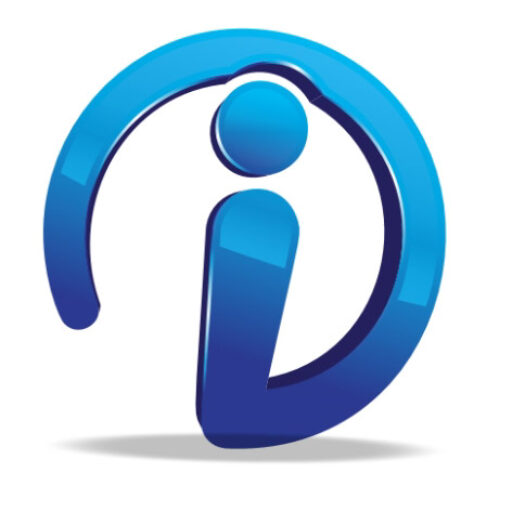
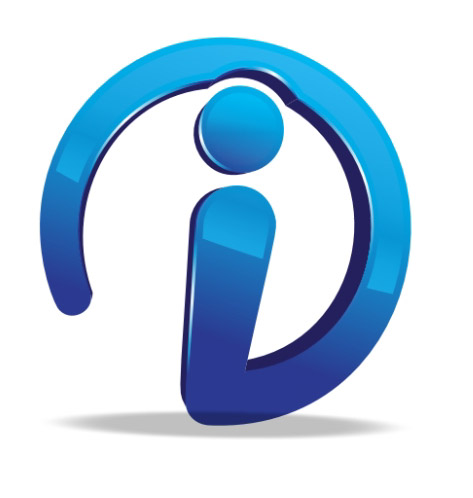

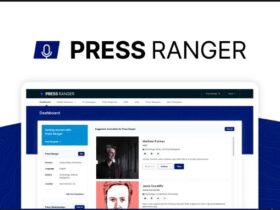
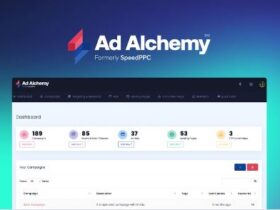
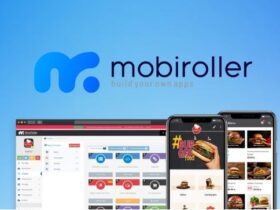
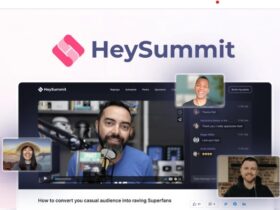

1 Comment